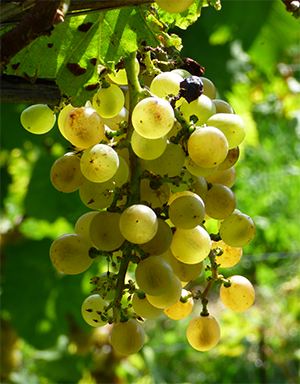 DELIVERY FROM £4.95
DELIVERY FROM £4.95 FREE DELIVERY FOR ORDERS OVER £100
FREE DELIVERY FOR ORDERS OVER £100Home » Community » Wine and Grape Guide » Picolit

The Picolit grape has unknown origins, although since the 17th century there is evidence of the goodness of sweet wine made with this grape, whose fame had crossed borders and had spread at the royal courts of Europe, thanks to Count Fabio Asquini that in the 19th century undertook a journey to find a market for the sweet wine Picolit as an alternative to the Hungarian Tokay.
The name almost certainly derives from the small size of the berry and the bunch, but also because of the limited production , due among other things to the frequent phenomenon of floral abortion. For these reasons, the cultivation of this variety has become increasingly scarce and it disappeared from the Veneto where it had spread, while it is still rooted in Friuli, in the provinces of Udine and Gorizia mainly. Picolit is often grown in the vineyards along the Verduzzo, in order to avoid, at least in part, the problem of floral abortion, encouraging cross-pollination.
Picolit has a small, ellipsoidal, white berry with waxy, thick and consistent skin around a green golden heart. The bunch is medium, pyramidal, often with a wing, sparse or very sparse. Its leaf is medium, pentagonal, and five-lobed.
Picolit vine has high vigor, mid-late maturing and a not constant productivity because of floral abortion phenomenon and its wines have a straw yellow colour with complex aromas reminiscent of wild flowers, almond, peach and the sweet chestnut taste slightly almond-bodied and of great finesse. Picolit wines are often aged and the grapes are left to dry before before vinification.



Before we say ciao, why not join our newsletter & stay up to date on everything happening on planet Italyabroad.com